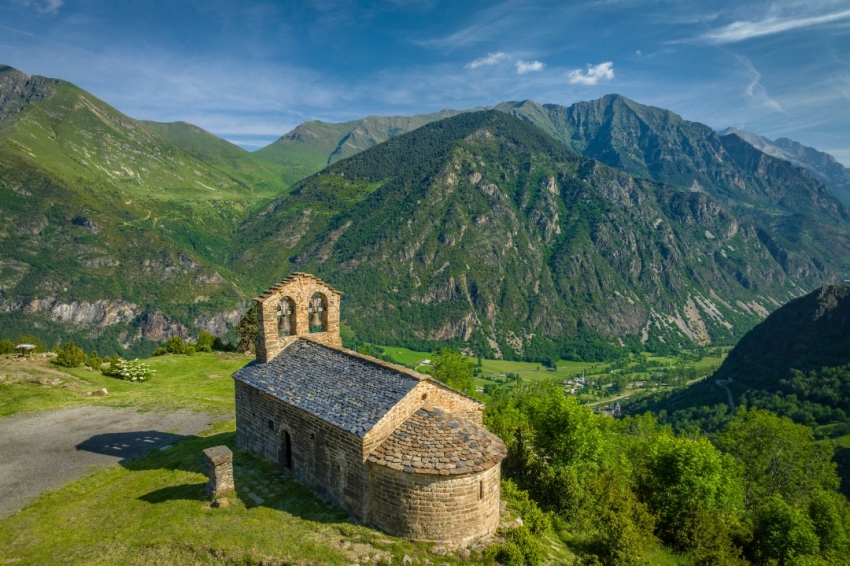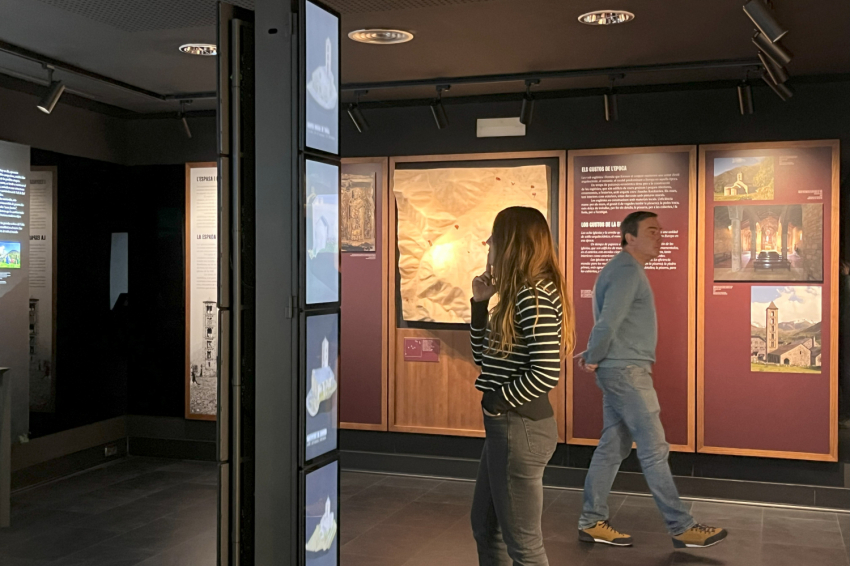La Vall de Boí
The Boí Valley: nature, culture, and sport in the Pyrenees
Vall de Boí is a municipality of eight small towns that, thanks to its isolation, has preserved its territory, nature, and cultural heritage almost intact, with a traditionally livestock-based economy.
The main attractions are the Aigüestortes and Estany de Sant Maurici National Park, the only national park in Catalonia, the Caldes de Boí spa, the ski slopes of Boí Taüll Resort, the group of Romanesque churches declared a World Heritage Site by UNESCO, and the new proposals for activities in the churches, video mapping and the Romanesque Centre and its new museum.
Boí Valley Outdoor Park
This new space is a commitment to active and sustainable tourism. The Vall de Boí Outdoor Park is the new brand created to encompass all the sports available in the Vall de Boí.
From hiking, orienteering courses, individual or guided mountain biking and e-bike routes, zip lines, climbing, via ferrata, fishing, mountaineering, running, skiing, paragliding, and even pump truck and skate parks.
Hiking, nature in its purest form
In the Vall de Boí, you'll find a valley ripe for exploration on foot. From the natural wonders of the Aigüestortes National Park to the well-signposted Romanesque paths that connect the churches in each of its villages.
Ancient paths, witness to the passage of men and animals for centuries, now invite us to disconnect and rediscover a living heritage.
The new Romanesque Center
The Romanesque heritage of the Boí Valley now has a renovated Romanesque Center in Erill la Vall, with a modern, accessible, and immersive museum. A new virtual experience has been added, allowing visitors to travel back in time to better understand what life was like in the Middle Ages and the function of Romanesque churches.
The center therefore offers an innovative and exciting way to explore this UNESCO World Heritage site.
Aigüestortes and Estany de Sant Maurici National Park
Peaks exceeding 3,000 meters, rivers, waterfalls, ponds, and a rich biodiversity define this protected area, unique in southern Europe. The Vall de Boí is one of the main gateways, with two outstanding routes: through Aigüestortes, with easy and tranquil access, and through Cavallers, with a stunning rocky landscape. It is an ideal place for hikers, photographers, and lovers of pure nature.
Culture at its finest
Visit us and relive the ancestral traditions and ways of life of our ancestors, surrounded by a natural and cultural environment of great value. The Fallas festival, celebrated in sixty-three villages in the Pyrenees and Pre-Pyrenees (34 in France, 17 in Catalonia, 9 in Aragon, and 3 in Andorra), has been declared an Intangible Heritage of Humanity by UNESCO.
The Fallas festival is linked to the agricultural and solar cycles. Pulling the fire, a symbol of the sun, from the mountain and bringing it down to the village serves to purify the fields and forests, cleanse the population, and protect them from evil spirits.
Towns with soul
- Barruera: the administrative heart of the valley, with the church of Sant Feliu and the hermitage of Sant Salvador.
- Cuello: small nucleus with the church of the Assumption.
- Saraís: abandoned village with the church of Sant Llorenç, only accessible on foot.
- Cardete: hanging over the rocks with spectacular views and the church of Santa Maria.
- Durro, one of the most beautiful villages in Spain, preserves its medieval appearance and boasts the Nativity and San Quirco.
- Erill la Vall: home to the Romanesque Centre, with Santa Eulàlia and its Romanesque bell tower.
- Boí: traditionally the most important town, with the Sant Martí and Sant Joan bridges, the oldest in the valley.
- Taüll, a charming village awarded by the Catalan Tourism Agency, the highest of all, with Santa Maria and Sant Climent, where you can enjoy a spectacular video mapping that recreates the original frescoes.
What to do
Roger Gras | Guia Aigüestortes
La Vall de BoíRoger Gras is a local guide specializing in personalized activities in the…
Turisme Alta Ribagorça
Discover Alta Ribagorça. A unique natural environment in the world through the…
Estació de Muntanya Boí Taüll
La Vall de BoíLocated in the heart of the Lleida Pyrenees, the Boí Taüll mountain…
Where to eat
Roch Hotel - Restaurant
Sort (a 25.5 Km)A small, family-run rural hotel, very welcoming, where its owners (Xavi and…
Where to sleep
Roch Hotel - Restaurant
Sort (a 25.5 Km)A small, family-run rural hotel, very welcoming, where its owners (Xavi and…
Hotel i hostal Vall d'Àneu
Esterri d'Àneu (a 29.5 Km)Two different buildings that you can enjoy 100%, whether you stay at…
































